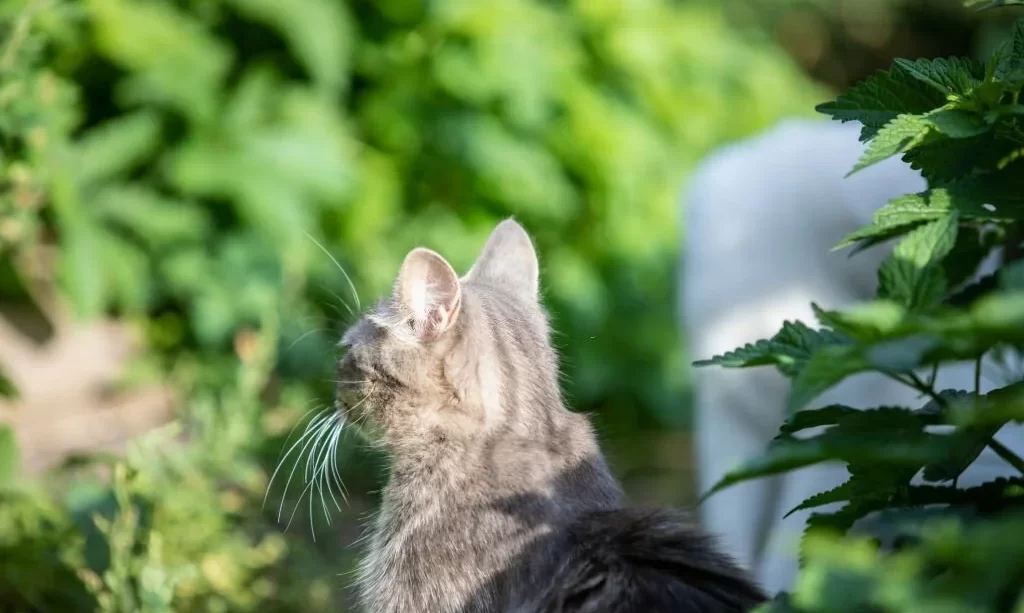Arrowhead Plants, with their elegant, arrow-shaped leaves and attractive foliage, have become a favorite among indoor plant enthusiasts. However, for those who share their homes with cats, a vital question arises: Are Arrowhead Plants safe for feline companions? In this comprehensive guide, we explore the world of Arrowhead Plants, delving into their characteristics and potential risks to cats. By understanding the potential toxic components and taking precautions, we aim to provide cat owners with the knowledge needed to create a safe and harmonious living environment for both their plants and their beloved pets.
- Live White Butterfly Plant
- Live Indoor Houseplant
- 4” Diameter, Approx 8” Tall
- Thrives in Low to Medium Sunlight
- Water When Soil is 50% Dry
What Are Arrowhead Plants?
Arrowhead Plants, scientifically known as Syngonium podophyllum, are tropical houseplants adored for their distinctive arrowhead-shaped leaves and variegated patterns. These versatile plants come in various cultivars, offering an array of leaf colors and designs that add elegance to any indoor space. Their ease of care and adaptability make them a popular choice for both seasoned gardeners and newcomers to the world of indoor plants.
Potential Toxic Components
The potential risk associated with Arrowhead Plants for cats lies in the presence of insoluble calcium oxalate crystals. These microscopic crystals are found within the plant’s leaves and are the primary toxic components. When cats come into contact with the leaves or chew on them, these crystals can cause irritation and discomfort, particularly in the mouth and digestive tract. It’s essential to be aware of these toxic components to ensure the well-being of your cats when Arrowhead Plants are present in your home.
Symptoms of Toxicity in Cats
Recognizing the symptoms of toxicity in cats that have come into contact with Arrowhead Plants is crucial for timely intervention. Common signs of toxicity may include:
- Oral Irritation: Cats that have nibbled on Arrowhead Plant leaves may show signs of oral discomfort, such as excessive drooling, pawing at the mouth, or vocalization indicating pain.
- Gastrointestinal Distress: Ingesting Arrowhead Plant leaves can lead to gastrointestinal upset, including vomiting and diarrhea.
- Swelling and Inflammation: Swelling and inflammation of the mouth, tongue, and throat can occur due to the presence of calcium oxalate crystals, making it painful for cats to eat, swallow, or groom themselves.
- Lethargy: Cats may become lethargic or less active as a result of the discomfort and distress caused by the ingestion of toxic plant materials.
- Loss of Appetite: The irritation from Arrowhead Plant ingestion can lead to a loss of appetite in affected cats.
Safety Measures for Cat Owners
To ensure the safety of your cats and prevent potential Arrowhead Plant toxicity, consider the following safety measures:
- Plant Placement: Keep Arrowhead Plants out of reach of your cats. Place them in areas where your pets cannot easily access them, such as on high shelves, hanging planters, or in rooms with closed doors.
- Monitoring: Observe your cats around plants, especially if they are known to be curious or prone to nibbling on foliage. If you notice any attempts to chew the Arrowhead Plant, consider relocating the plant to a more secure location.
- Cat-Friendly Alternatives: Choose cat-friendly houseplants that pose no threat to your pets. Some non-toxic options include spider plants, cat grass, or catnip. These alternatives provide safe opportunities for your cats to interact with indoor greenery.
- Educate Family Members: Ensure that everyone in your household, including children, understands the potential risks associated with certain houseplants and the importance of keeping them away from pets.
- Emergency Response: If you suspect your cat has come into contact with Arrowhead Plant leaves and displays any signs of toxicity, contact your veterinarian immediately. Rapid action can help prevent further complications and ensure the well-being of your pet.
By staying vigilant and implementing these safety measures, you can enjoy the beauty of Arrowhead Plants in your home while prioritizing the well-being of your feline companions.
What to Do If a Cat Ingests Arrowhead Plant
If you suspect that your cat has ingested Arrowhead Plant leaves, it’s crucial to take immediate action to ensure your pet’s well-being. Here are the steps to follow:
- Contact Your Veterinarian: Reach out to your veterinarian as soon as possible. Inform them of the situation, including the type of plant ingested and any symptoms your cat is experiencing.
- Observe Your Cat: Keep a close watch on your cat’s behavior and condition. Document any changes in their health or behavior to share with the veterinarian.
- Do Not Induce Vomiting: In the case of Arrowhead Plant ingestion, inducing vomiting is typically not recommended and may not be effective in removing calcium oxalate crystals from the mouth and throat.
- Follow Veterinary Advice: Comply with the guidance provided by your veterinarian. They may recommend specific treatments or therapies to address the symptoms and potential complications associated with plant ingestion.
Cat-Friendly Houseplant Alternatives
For cat owners who want to maintain a pet-friendly environment while enjoying the presence of indoor greenery, there are several non-toxic houseplant alternatives to consider. These alternatives pose minimal risk to your feline friends and can still add a touch of nature to your home. Some cat-friendly houseplants include:
- Spider Plant (Chlorophytum comosum): Spider plants are well-tolerated by cats and offer a playful, cascading appearance that many cats find appealing.
- Cat Grass (Dactylis glomerata): Cat grass provides a safe and enjoyable source of fiber for cats. It’s also known to satisfy their natural urge to chew on grass.
- Catnip (Nepeta cataria): Catnip is a favorite among cats and can provide endless entertainment for your feline companions.
- Areca Palm (Dypsis lutescens): The Areca Palm is non-toxic and adds a touch of tropical elegance to your space.
- African Violet (Saintpaulia): African violets are known for their vibrant, colorful blooms and are safe for cats to be around.
- Your Cat Deserves the Best: Our cat grass blend adds important nutrients to your cat’s diet, including wheat grass, oat, barley and rye. Organic and loaded with all the fiber your pet needs for healthy digestion, our cat grass kit provides hairball control for cats as well as a tasty edible grass treat.
- Cat Plant Magic: Add a soil disk, a splash of water, and a sprinkling of seeds, and watch your cat grass planter kit sprout like magic. Read our Cat Ladies insert for easy-to-follow instructions and growing tips, and watch your organic cat grass sprout up to 4” in just 4–7 days. No green thumb required.
- Good for Cats, Good for All: Not only are our grow kits organic and GMO-free, but our cat grass for indoor cats deters them from eating toxic household plants and digging up your favorite blooms, making our cat grass good for cats and their humans.
- Purrfectly Giftable: A great gift for cat moms everywhere, our cat grass growing kit keeps your feline friends healthy and happy while keeping your house looking greener and cleaner.
- What’s Inside: Our Cat Grass Growing Kit includes 3 organic soil disks (number may vary), 3 packages of our locally sourced cat grass seed blend, 3 BPA-free containers, and simple instructions.
Conclusion
Arrowhead Plants may add elegance and greenery to your indoor spaces, but their potential toxicity to cats should be taken into account. Understanding the symptoms of toxicity and implementing safety measures, such as plant placement and offering cat-friendly alternatives, is crucial in creating a harmonious living environment for both your plants and your beloved feline companions. By making informed choices regarding indoor plants and prioritizing your cats’ safety, you can enjoy the beauty of houseplants while keeping your pets safe and content.





